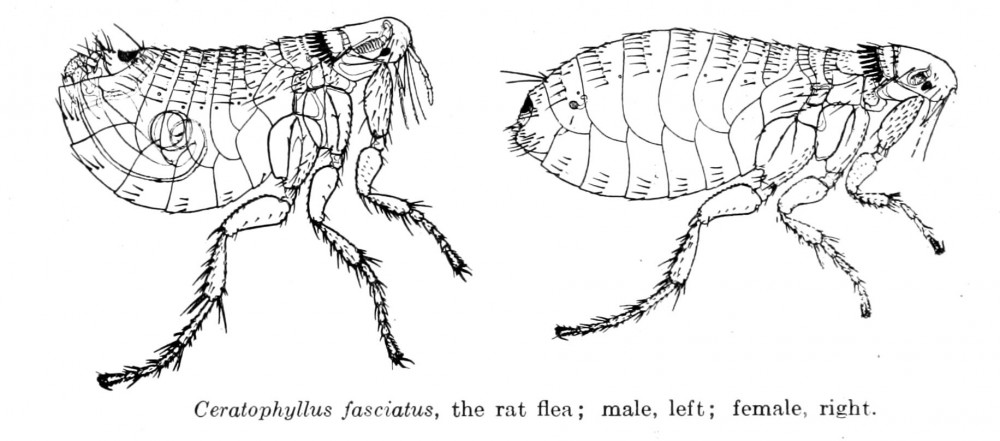The northern rat flea (Nosopsyllus fasciatus) is one of the most widespread species of flea in the world. It receives its namesake from its preference of feasting on the blood of rats and house mice. While other types of fleas prefer dogs and/or cats as hosts, the northern rat flea often chooses rats and mice. This makes it particularly problematic for individuals living in regions where rodents are common. To learn more about the northern rat flea, including treatment and prevention methods, keep reading.
Before we reveal prevention and treatment options for northern rat flea infestations, let’s first discuss the physical appearance and characteristics of this all-too-common household pest. According to Wikipedia, the northern rat flea is approximately 3-4 mm in length and has 18-20 spines running across its back. This makes it roughly the same size at a dog or cat flea. Unlike most other species of flea, however, the northern rat flea lacks a genal ctenidium.
Keeping the northern rat flea out of your home is a relatively simple process. The fact is that most people over-complicate the process by relying on harsh chemicals, sprays, bombers, foggers, and other associated products. At best, products such as these will only offer temporary relief, at which point the northern rat flea will return, with its numbers multiplying. So, how do you keep this blood-sucking parasite out of your home?
Going back to the basics of flea anatomy 101, all fleas — including the northern rat flea — prefer hot, humid environments in which to thrive. If you’re able to create an environment inside your home that’s unsuitable to the northern rat flea, it will look for residence elsewhere. A good rule of thumb is to aim for an indoor relative humidity in your home of 50% or lower and a temperature of 70 degrees Fahrenheit or below. This will deter fleas from entering and staying inside your home.
Being that the northern rat flea feasts on the blood of rats, mice and rodents, you should inspect your home for a rodent infestation. When the northern rat flea is present, chances are rodents are nearby. Unless you plug up the holes and entry points rodents are using to enter your home, you won’t be able to stop the northern rat flea from thriving.
Have you seen or otherwise dealt with the northern rat flea? Let us know in the comments section below!
Jan 14, 2015 @ 10:59

